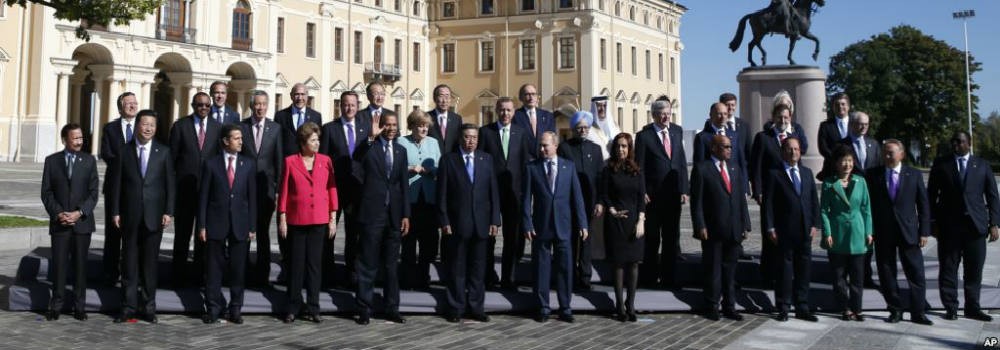Global Entrepreneurship in the G20
Despite international cooperation, not all countries are entrepreneurially equal
By: Grace Kennedy, staff writer
“Crisis delenda est, Entrepreneurship est memorandum.”
Under the revised words of Cato the Elder, 400 young entrepreneurs gathered in Moscow for the 2013 G20 Youth Entrepreneurs’ Alliance Summit in mid-June to discuss the future of entrepreneurship in their countries. Together, they crafted a report outlining the actions leaders of the 20 major economies should take to promote entrepreneurship in their countries.
“One of the major concerns of many modern economies is structural unemployment, in particular among young people,” the 2013 communiqué reads.
“Entrepreneurship is a tool that provides targeted support for those who are currently unemployed or underemployed, and who have high potential in the innovation economy …. There is ample evidence to say that any seriously grounded policy to reinvigorate growth and job creation should have entrepreneurship at its core, with a strong emphasis on youth.”
The actions that the G20 entrepreneurs advocate for certainly have that at their centre. Along with increased access to financing and sustainable labour laws, they also included recommendations for improved education and digital access.
The national level, however, has a much different dynamic than the international.
The G20 countries range from fourth to 132nd place based on the level of ease they have doing business in the International Finance Corporation (IFC) and World Bank’s evaluation of “Doing Business”. For starting a business, it ranges from second to 173rd.
Many of these countries have a very different entrepreneurial culture than North America, as well as different levels of red tape, corruption, and bureaucracy. They may favour the independent entrepreneur or hinder them. Their government may be directly involved in the country’s economy – such as the German government, who has approximately a 45 per cent share in the country’s GDP – or may allow it to meander down its own path.
China – 91 for Ease of Doing Business
For many people, the idea of entrepreneurship in the People’s Republic of China is an oxymoron and a half. The perceived atmosphere of closed policies and hushed bribery, along with the communist dislike of capitalism, does not seem conducive to the innovation of entrepreneurial activity.
However, even under the early days of the communist regime Chinese entrepreneurs survived. Though most of these entrepreneurs were part of the Getihu (small-scale retail and service businesses like street vendors) and many were criminals or illegal migrants, they still demonstrated entrepreneurial characteristics. They often worked primarily to obtain benefits for themselves – an activity known as rent-seeking – and dominated the black market and underground economy.
But in 1987, a change in policy and a repeal of the law limiting private employment to seven people saw a change in the demographic of entrepreneurship. Private enterprises increased by 93 per cent in 1987 alone – by 1990, township and village enterprises accounted for 20 per cent of China’s gross output. Although the traditionally negative connotations of starting a business remained, the times were changing.
Now, entrepreneurship has emerged from the Getihu. The Communist Party of China estimates that over 113,000 of their members run businesses, and small- and medium-size enterprises (SMEs) provide 60 per cent of China’s industrial output, according to the International Entrepreneurship website. The private enterprise sector has been growing by 20 per cent each year, compared to 9.5 per cent over the past two decades.
Despite these impressive numbers, entrepreneurs in China do not have it easy. The fates of many businesses are dictated by the whims of government policy.
“There is no long term strategic planning because you don’t know what’s going to happen from one day to the next,” famous translator and art critic, Lei Fu was recorded saying in the Spring 2001 edition of the Stanford Journal of East Asian Affairs.































Share the post "Global Entrepreneurship in the G20"